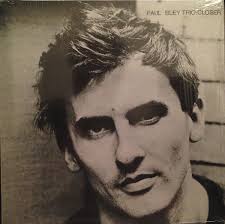
Three Wishes
The inquiry of three wishes came from the Baroness to Paul Bley who told her:
- “To never hear another chord!”
- “To be driven home to Fourteenth Street and Eighth Avenue. Thank you very much! I’ll tell you my other wish next time I see you.”
- “To have God on your side.”
*Excerpt from Three Wishes: An Intimate Look at Jazz Greats ~ Compiled and Photographed by Pannonica de Koenigswarter
More Posts: baroness,history,instrumental,jazz,music,pannonica,piano,three,wishes

Daily Dose Of Jazz…
Akira Sakata was born on February 21, 1945 in Hiroshima, Japan and first heard jazz on short-wave radio and Voice of America, then became more interested in it from listening to film soundtracks. His serious study of music began in high school where he played clarinet. He played alto sax in a jazz band when at Hiroshima University and trained as a marine biologist before moving to Tokyo, Japan in 1969.
From 1972 to 1979 Sakata was a member of the Yamashita Yosuke Trio and toured internationally with them. In 1986, he performed with the group Last Exit with Bill Laswell. This performance was released as The Noise of Trouble: Live in Tokyo. Laswell went on to play bass on and produce Sakata albums such as Mooko, Silent Plankton and Fisherman’s.com, the last of which also featured the reclusive Pete Cosey on guitar. He later worked with DJ Krush and Chikamorachi with Darin Gray and Chris Corsano.
His career nearly ended in 2002, when he had a brain haemorrhage and he had to relearn the saxophone, only to return to performing after three months, but still had some remaining restrictions years later. Akira is also a television and film actor, as well as being a writer.
Free jazz saxophonist Akira Sakata, who has recorded fifteen albums as a leader, continues to perform and record.
More Posts: history,instrumental,jazz,music,saxophone
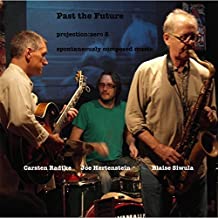
Daily Dose Of Jazz…
Blaise Siwula was born in Detroit, Michigan on February 19, 1950. Growing up in a working/middle-class black neighborhood. His next-door neighbor practiced saxophone in the afternoon and occasionally allowed him inside to watch him play. He began studying the alto sax at the age of 14, playing in the middle school concert band.
Hearing the John Coltrane album Om in 1969 compelled him to take up the tenor saxophone. He was also influenced by hearing Art Pepper in San Francisco, as well as Ornette Coleman, Sonny Stitt, Archie Shepp, Pharoah Sanders, Sun Ra, Blue Mitchell, Elvin Jones, and Miles Davis in live performances in Detroit in the 1970s. Cecil Taylor’s recordings with Jimmy Lyons were inspirational in a later period along with Ravi Shankar and the Detroit Symphony Orchestra in the Seventies.
At college on and off for an extended period from 1968 to 1980, he studied theory and composition at Wayne State University, and earned a BFA. His first personal encounter with jazz musicians came around 1971 while living in a hotel near the downtown campus like drummer Doc Watson. Moving to San Francisco, he started playing free improvised music in coffeehouses and writing poetry. After four years in Northern California, he returned to Detroit before heading for Europe in 1989. Working and traveling as a street musician for three months, then returning to the States and settling in New York City.
After periodic explorations of drama, poetry, architecture, and visual art, and quite unable to secure a recording contract initially, he recorded independently produced cassette tapes. He played with Amica Bunker, the Improvisers Collective, and the Citizens Ontological Music Agenda (COMA) series.
During the decade of the 2000s, Blaise composed music scores, played a number of saxophones, clarinets, flutes, percussion and string instruments, and computer-altered sound files as background for improvisation. His many collaborators have included Doug Walker’s Alien Planetscapes, Cecil Taylor’s Ptonagas, William Hooker’s ensembles, Judy Dunaway’s Balloon Trio, Dialing Privileges with Dom Minasi and John Bollinger, Ken Simon, Karen Borca, Jackson Krall, Tatsuya Nakatani, and William Parker, among others.
Avant-garde alto saxophonist, composer and bandleader Blaise Siwula, who has been a part of New York City’s underground jazz scene, continues to performa and record.
More Posts: clarinets,flutes,percussion,saxophones,strings
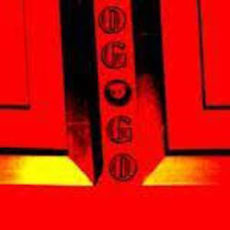
Daily Dose Of Jazz…
Igor Grigoriev was born on January 24, 1955 in Moscow, Russia and taught himself to play the guitar as a young child, and later obtained his master’s degree from a music institution in Russia. As a young boy in the late sixties, he was interested in the latest music of the time, rock and started his career, gaining fame by playing and touring around the world.
Becoming a band leader of the trio, Roof, with trumpeter Andrew Solovyov, and percussionist Michael Zhukov they recorded on Melodia Records and Leo Records. His group, Asphalt also gained tremendous popularity despite its short life span.
As he developed musically, Grigoriev became interested in Charlie Parker’s work, but in later years the influence of classical composers became evident in his music. Permanently migrating to the United States in 1989 he continued his career, as a classical and jazz musician, but later he became more and more interested in Avant-garde music.
Better known for his 1990s work, he rapidly assimilated the American avant-garde and forged his own, instantly identifiable style. His music of the 1970s and 1980s saw transition from rock to classical to jazz and to avant-garde music. Igor developed methods of simultaneously improvising bass lines, harmony and melodic lines. In his later years, his playing became less predictable and formulaic.
He has recorded a number of solo albums, as well as recording or performing with Stan Getz, Red Callender, Larry Gales, Milcho Leviev, Ira Schulman, Rod Oakes, and many others. Igor and Rod founded OGOGO in 1996, which is one of the most important organizations to perform improvised music. His central focus was free improvisation, though he occasionally appeared in more conventional jazz and classical contexts, such as big band, various ensembles, and string orchestra.
He composed and arranged for a wide range of music genres, did orchestra work for a Russian circus, and arranged music for theatrical plays. As an educator he taught guitar, music history, jazz history, ensembles, and improvisation at Los Angeles Harbor College and Cerritos College in Los Angeles, California. Guitarist, composer, arranger, band leader and educator Igor Grigoriev passed away on September 25, 2010.
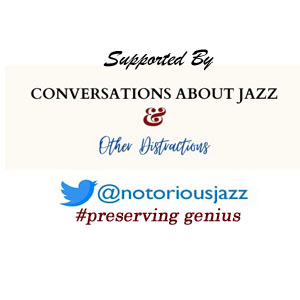
More Posts: arranger,composer,guitar,history,instrumental,jazz,music
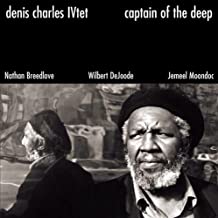
Daily Dose Of Jazz…
Denis Charles was born in St. Croix, Virgin Islands on December 4, 1933 and first played bongos at age seven with local ensembles in the Virgin Islands. Moving to New York City in 1945, he gigged frequently around town and in 1954 began working with Cecil Taylor, and the pair collaborated for the next four years. Following his work with Taylor, he played with Steve Lacy, Gil Evans, and Jimmy Giuffre. He befriended Ed Blackwell, and the two influenced each other.
Recording with Sonny Rollins on a calypso-tinged set, Denis then returned to play with Lacy until 1964. He worked with Archie Shepp and Don Cherry in ‘67 and then disappeared from the jazz scene until 1971. In the 1970s and 1980s he played regularly on the New York jazz scene with Frank Lowe, David Murray, Charles Tyler, Billy Bang, and others, and also played funk, rock, and traditional Caribbean music.
Between 1989~1992 drummer Denis Charles released three albums as a leader before passing away of pneumonia in his sleep on March 26, 1998 in New York City in 1998, four days after a five-week European tour with the Borgmann/Morris/Charles (BMC) Trio, with Wilber Morris and Thomas Borgmann. In 2002 Veronique N. Doumbe released a film documentary Denis A. Charles: An Interrupted Conversation about his life.

More Posts: bandleader,composer,drums,history,instrumental,jazz,music

